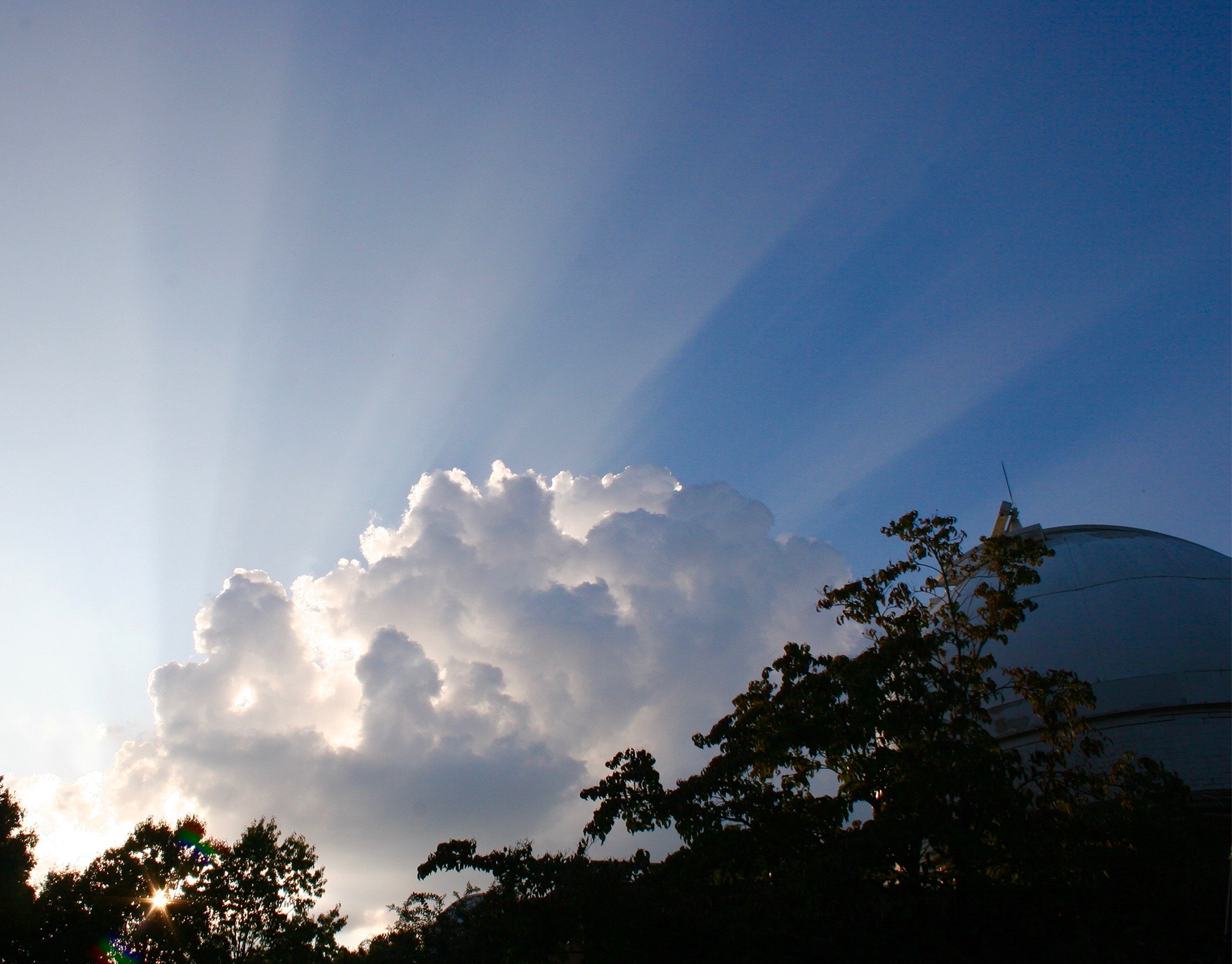 As an astronomical observatory, we most look forward to perfectly clear skies which allow us to see distant cosmic bodies, but on occasion we enjoy lovely surprises cooked up by the Earth’s own atmosphere.
As an astronomical observatory, we most look forward to perfectly clear skies which allow us to see distant cosmic bodies, but on occasion we enjoy lovely surprises cooked up by the Earth’s own atmosphere.
This photo was taken from the Dyer Observatory grounds looking westward on a summer afternoon. Our main dome, which houses the 24-inch Seyfert Telescope, is visible to the right.
In the near-distant sky is a cumulonimbus calvus cloud. It meets that definition for it is moderately tall and is capable of precipitation, but its height has not reached the troposphere where an “anvil” top would form. This type of cloud may create hazardous weather such as lightning, wind, and hail, but from a distance, it is a serene and beautiful specimen.
Photo by Alex. Rockafellar
<- Previous May 18, 2020 Next ->
Tucked up among the wooded hilltops of northern Brentwood, Vanderbilt Dyer Observatory is considered by many to be a hidden treasure of the area. Visitors to our satellite campus not only learn about some of the cutting-edge discoveries and science in astronomy but they also get a dose of nature, history, and many other things while here. Over the years, we at Dyer Observatory have made the preservation of our facility and grounds a key mission. Preservation not only entails things such as maintaining our telescopes — it also includes keeping a record of days passed. Since 1953, we have amassed a number of interesting images, pieces of equipment, and ephemera. Every day tends to bring new surprises. In continuing our tradition of public education and outreach, Stellar Finds regularly provides an image and description of the diverse paraphernalia associated with Vanderbilt Dyer Observatory and the history of astronomy at Vanderbilt University.